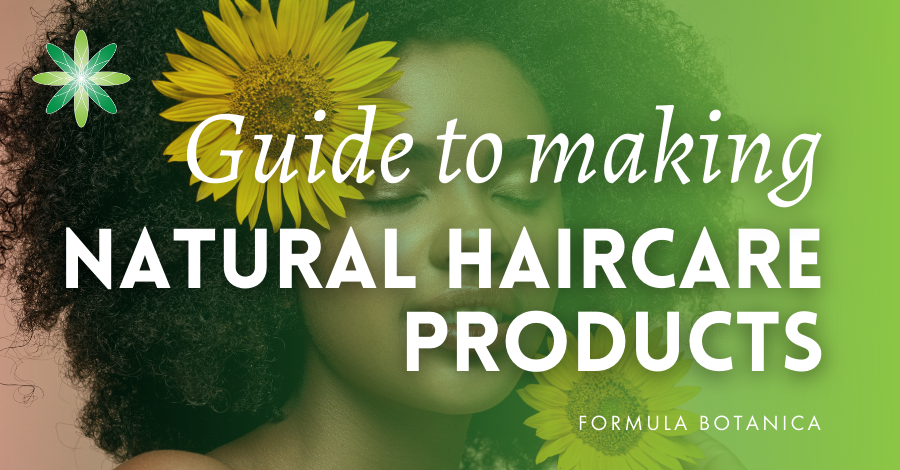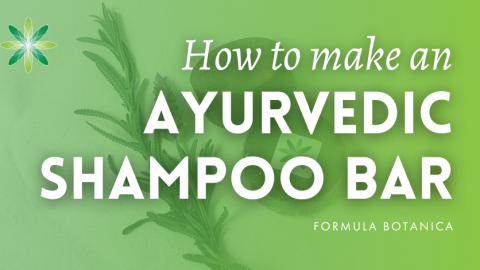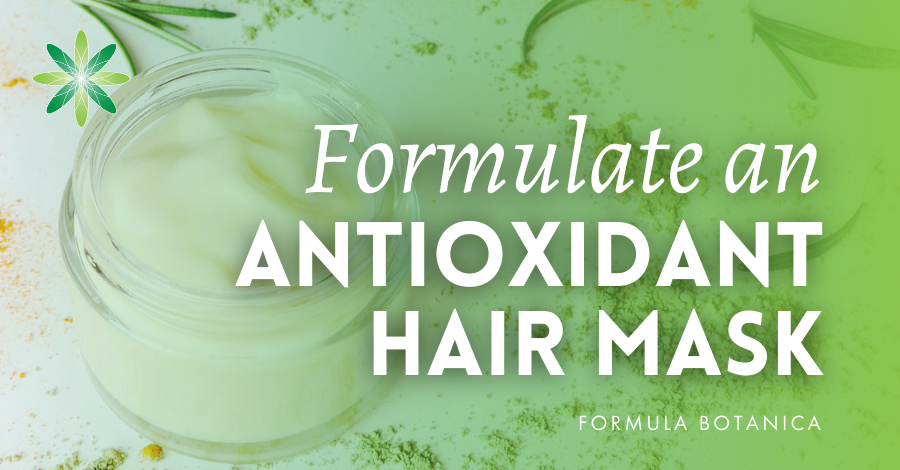Shampoo bars are gaining ground against regular liquid shampoos and increasingly being sought out by conscious beauty consumers – as our post on natural haircare trends predicted a couple of years back. Consumers are becoming more aware of and concerned about the sustainability of their personal care products and are actively looking for innovative, natural alternatives to regular products that minimise their carbon footprint in both their formulation and packaging.
Over on our membership site The Lab at Formula Botanica, we do a deep dive into sustainable packaging in our mini lab (January 2021). In it, we look also at the rise of zero waste and solid formulations as ways to reduce packaging and mitigate a product’s environmental impact. Certainly, solid beauty products have a role to play in greater sustainability in the beauty industry. They have other advantages too such as being more travel friendly as won’t leak and are often less complex formulations with fewer ingredients.
Here, we introduce you to a shampoo bar which is created from a few, key sustainable ingredients and the best part of all is that it doesn’t require any packaging and is easy to carry around.
The two types of Shampoo Bar
There are two types of shampoo bar: one which is a soap base; and the other a pH-balanced shampoo bar. Soap bar bases generally have a high pH of between pH9-12. In a solid shampoo bar, this highly alkaline pH can increase the negative charge of the hair which can result in drying out the hair and creating a “static” effect.
A pH-balanced shampoo bar has a pH range of 4.5 – 5.5. It is gentler on the hair follicles and scalp. In our formulation, we pair two surfactants to create a mild cleansing effect that leaves the scalp clean.
Key ingredients in our Shampoo Bar
Cocoa butter has long been used in shampoos as it creates a good viscosity at a low percentage usage. It is an excellent lipid for shampoos, contributing to the product’s mildness on the hair and scalp. Cocoa as a whole is known for its antioxidant properties as well as for its high protein content that can strengthen hair follicles.
In this formulation, we use Sodium cocoyl isethionate which is a mild, foaming surfactant derived from coconut oil. When paired with Sodium lauryl sulfoacetate, another mild cleansing surfactant but one able to form a slightly richer lather, it creates a fantastic solid shampoo bar that leaves your hair and scalp feeling clean and fresh. Both are anionic surfactants which mean they are effective in removing sebum and dirt. This shampoo bar formulation can be used for two to three hair washes a week.
We recommend following it up with a natural hair conditioner. See our formulas:
Try this @FormulaBotanica shampoo bar formulation to discover why solid beauty products are trending and sustainable. #shampoobar #naturalshampoo #organicformulator Share on XHow to make a natural organic hair conditioner
How to make a babassu deep natural hair conditioning mask as well as our post rounding up
Green beauty blogger verdicts on natural hair care
Our Formulation: Cocoa Shampoo Bar
Formula for 80g shampoo bar
| Phase | Ingredients | Weight (grams) |
| A | Sodium Cocoyl Isethionate noodle | 38.00g |
| A | Sodium Lauryl Sulfoacetate powder | 24.00g |
| A | Cocoa powder | 0.40 |
| B | Unrefined Cocoa butter | 4.00g |
| B | Kokum butter | 2.40g |
| B | Cetyl Alcohol | 3.20g |
| C | Cocamidopropyl betaine | 6.40g |
| C | Pro-vitamin B5 | 0.80g |
| C | Hydrolyzed Quinoa | 0.80g |
| Total: 80.00 |
Method of Manufacture
- Butters and fatty alcohol
Gently melt all of phase B butters and the fatty alcohol in a bain Marie or water bath. Once melted, remove from bain marie and let it cool.
- Measure out other phases
Measure all of phase A ingredients in a beaker. Set aside.
Measure the ingredients of phase C in another beaker. Set aside. - Blending phases
Add phase C into Phase A. Mix well slowly.
- Cooling down phase
When phase B had cooled down to about 50 degrees C, add it to the mixed phase A and C.
- Forming the solid bar
Slowly mix it with a firm spatula. Once a dough-like consistency has started to form, take the mixture out. Continue to mix it till you can hold it in your gloved hands. You will notice that it doesn’t stick to your glove and that is when it is ready to be placed in the shampoo bar mould of your choice.
- Leave to dry
Compress the dough sufficiently. Remove the bar from the mould and leave it to dry for a few days to allow it to harden.
Optional Ingredient: Preservatives
This formula has a very low water content hence no preservative is required. A shampoo bar generally will be left to dry after each use. The shampoo bar can be placed on a shampoo bar saver made of coconut husk which will allow excess water from the shower to be drained.
You can add a natural preservative if that will give you a peace of mind. The preservative should have water-soluble components.
Formulation Tips
- You can add in essential oils to this formula according to your preference. There is a dermal limit to be adhered to when formulating leave on and rinse off products. No essential oils were added to this formula as we wanted the natural scent of cocoa to be present.
- The cocoa powder can be increased to 2% but do take into consideration that the cocoa scent can be overpowering. The unrefined cocoa butter has a strong cocoa scent itself.
- You can swap Cetyl alcohol for Stearic acid.
Now it’s your turn to make your very own shampoo bar. Leave us a comment below to tell us how you got on and especially if you customised our formula with your own choice of butters and scents.
Suggested Suppliers
Sodium Cocoyl Isethionate noodle EU / UK: Alexmo.de US: American Soap Supplies Sodium Lauryl Sulfoacetate powder EU / UK: Alexmo.de; and The Soap Kitchen. US: SaveonCitric.com
Kokum butter EU / UK: The Soap Kitchen US: SaveonCitric.com
Cetyl Alcohol EU / UK: Alexmo.de, and The Soap Kitchen. US: Formulator Sample Shop Cocamidopropyl betaine EU / UK: Alexmo.de, and Aromantic US: Formulator Sample Shop Pro-vitamin B5 EU / UK: Alexmo.de, and Aromantic. US: Formulator Sample Shop Hydrolyzed Quinoa EU / UK: Formulator Sample Shop US: Formulator Sample Shop
FAQs on Shampoo Bars
Natural shampoo bars are solid hair cleansers formulated mainly with waxes for hardness, butters like cocoa butter to provide emollient fats and surfactants for lathering and cleansing properties as well as active ingredients like Vitamin Pro-B. They are pressed into solid forms in moulds, rather like soap is fashioned. Solid shampoo bars are considered as sustainable alternatives to mainstream liquid shampoos as they are formulated with little water, need only a few ingredients and can be packaged simply or even sold ‘naked’.
Natural shampoo bars are effective hair and scalp cleansers although they require a shift in approach. They lather up only gently but that doesn’t mean they aren’t working. They contain natural surfactants, many derived from coconut oil, that do not lather up like their synthetics counterparts. The advantage of a natural shampoo bar is that it is less likely to contain highly alkaline ingredients typical in liquid personal care products and that can strip hair of its natural oils drying it out and causing split ends.
If you are used to regular liquid shampoos, you need to adjust your washing technique when using shampoo bars. They also won’t lather as much. Wet your hair and the bar, then rub the bar over your hair, place it to one side and gently massage the product into your hair to get a gentle lather. Rinse out and apply a natural hair conditioner, which can also be in bar form.
Join us at Formula Botanica, where tens of thousands of students and followers take our free and paid online courses to learn how to formulate organic skincare and haircare for themselves or to sell.
FREE TRAINING
Learn how to become an
Organic Skincare Formulator
FREE TRAINING
How to become an
Organic Skincare Entrepreneur
FREE TRAINING
How to become an
Organic Skincare Entrepreneur
Leave us a comment

Eliza is a Formulator as well as a Grading Tutor at Formula Botanica, where she helps our students to become better organic cosmetic formulators. Read more about the Formula Botanica Team.



























